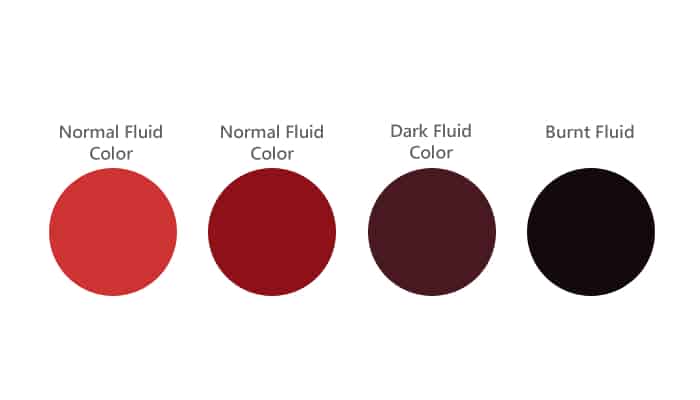Transmission Fluid Specifications for Your BMW
When it comes to maintaining your 2002 BMW 325i, understanding the right transmission fluid is crucial for optimal performance and longevity. The transmission fluid not only lubricates the moving parts but also helps in cooling and cleaning the transmission system. Using the correct type of fluid is essential to avoid costly repairs down the line.
Manufacturer’s Recommendations
| Popular posts |
|---|
| What to do to prolong the life of your manual gearbox |
| Automatic transmission: what it is, how it works |
BMW has specific guidelines for the type of transmission fluid to use in the 2002 325i. According to BMW’s specifications, the recommended transmission fluid is:
– Type: ATF (Automatic Transmission Fluid)
– Specification: BMW M-Transmission Fluid or equivalent
– Viscosity: Typically, a fluid with a viscosity of 5W-30 or 10W-30 is suitable.
It’s important to note that not all ATF is created equal. Using the wrong type can lead to poor shifting performance and even transmission failure. Always refer to your owner’s manual or consult a trusted mechanic to ensure you are using the right fluid.
Fluid Characteristics
The right transmission fluid should have the following characteristics:
- High Viscosity Index: This ensures that the fluid maintains its viscosity across a wide range of temperatures.
- Anti-wear Properties: Protects the internal components of the transmission from wear and tear.
- Oxidation Stability: Prevents the fluid from breaking down over time, which can lead to sludge buildup.
- Low Pour Point: Ensures that the fluid remains fluid even in cold temperatures, allowing for smooth operation.
Why It Matters
Using the correct transmission fluid is not just a recommendation; it’s a necessity. The transmission is one of the most complex and vital components of your vehicle. If you use a fluid that doesn’t meet BMW’s specifications, you risk:
- Poor Shifting Performance: Incorrect fluid can lead to hard or slipping shifts.
- Overheating: The wrong fluid may not dissipate heat effectively, leading to overheating.
- Increased Wear: Inadequate lubrication can cause premature wear on gears and bearings.
- Complete Transmission Failure: In the worst-case scenario, using the wrong fluid can lead to catastrophic failure.
Authoritative Sources
For confirmation of these specifications, you can refer to the following authoritative sources:
– BMW Owner’s Manual: Always your first stop for manufacturer recommendations.
– BMW Technical Service Bulletins: These documents provide updates and additional information on fluid specifications.
– Automotive Repair Manuals: Publications like Haynes or Chilton often include detailed specifications for fluids.
By sticking to the manufacturer’s recommendations for transmission fluid, you can ensure that your 2002 BMW 325i runs smoothly and reliably for years to come.
Recommended Oil Brands for Your BMW
When it comes to choosing the right transmission fluid for your 2002 BMW 325i, the brand can make a significant difference in performance and longevity. Many BMW owners have shared their experiences on forums and social media, providing valuable insights into which brands deliver the best results. Below, we’ll explore some of the most recommended oil brands based on owner feedback and community discussions.
Top Recommended Brands
Based on extensive feedback from BMW enthusiasts and mechanics, the following brands consistently come up as favorites for transmission fluid:
- BMW Genuine ATF: The most straightforward choice is the OEM fluid. Many owners swear by using BMW’s own transmission fluid, as it meets all the specifications set by the manufacturer.
- Liqui Moly: This German brand is well-regarded for its high-quality automotive fluids. Owners report smooth shifting and improved performance when using Liqui Moly ATF.
- Red Line: Known for its high-performance lubricants, Red Line ATF is often recommended for those looking to enhance their vehicle’s performance. Many users have noted better responsiveness and reduced slippage.
- Castrol Transmax: A popular choice among DIY mechanics, Castrol Transmax is praised for its affordability and effectiveness. Users have reported that it provides excellent protection and smooth operation.
- Mobil 1 Synthetic ATF: This synthetic option is favored for its high-temperature stability and excellent wear protection. Many owners appreciate the peace of mind that comes with using a well-known brand like Mobil 1.
Owner Experiences
The experiences shared by BMW owners can provide valuable insights into the performance of various transmission fluids. Here are some common themes and feedback from the community:
- Performance Improvement: Many users have reported noticeable improvements in shifting performance after switching to high-quality brands like Liqui Moly or Red Line. Owners often mention smoother gear changes and less hesitation.
- Longevity: Several forum posts highlight that using OEM fluids or reputable brands can extend the life of the transmission. Owners who have used BMW Genuine ATF often report fewer issues over time.
- Cost vs. Quality: While some owners opt for cheaper options, many emphasize that spending a bit more on a quality brand pays off in the long run. Users frequently state that they experienced fewer repairs and better overall performance with premium fluids.
- Compatibility: Owners have noted that certain brands work better with their specific models. For example, some have found that Liqui Moly is particularly effective in the 325i, while others prefer Red Line for its performance-enhancing properties.
Community Recommendations
In addition to individual experiences, various automotive forums and communities have compiled lists of recommended transmission fluids. Here are some key takeaways:
- **BMW Forums: Many enthusiasts recommend sticking to OEM fluids for peace of mind, especially for those who drive their vehicles hard or use them for track days.
- **Facebook Groups: Numerous discussions highlight the benefits of synthetic options, with many members sharing their positive experiences with Mobil 1 and Red Line.
- **YouTube Channels: Several automotive channels have conducted tests comparing different transmission fluids, often showcasing the advantages of high-quality brands like Liqui Moly and Red Line.
Choosing the right transmission fluid for your 2002 BMW 325i is essential for maintaining performance and reliability. By considering the experiences and recommendations from fellow BMW owners, you can make an informed decision that suits your driving style and needs.
Change Interval for Transmission Fluid
Maintaining your 2002 BMW 325i involves more than just regular oil changes; the transmission fluid also requires attention. Understanding the change interval is crucial for ensuring the longevity and performance of your vehicle’s transmission system.
Recommended Change Interval
For the 2002 BMW 325i, the general recommendation for changing the transmission fluid is every 30,000 to 60,000 miles (approximately 48,000 to 96,000 kilometers). However, this can vary based on driving conditions and personal driving habits. Here are some factors to consider:
- Driving Conditions: If you frequently drive in stop-and-go traffic, tow heavy loads, or drive in extreme temperatures, you may need to change the fluid more often.
- Driving Style: Aggressive driving can lead to increased wear on the transmission, necessitating more frequent fluid changes.
- Type of Fluid Used: Synthetic fluids may offer extended intervals compared to conventional fluids, but it’s essential to follow manufacturer recommendations.
Statistical Data
According to various automotive studies and manufacturer guidelines, regular transmission fluid changes can significantly reduce the risk of transmission failure. A study conducted by the Automotive Research Institute found that vehicles with regular transmission fluid changes experienced a 30% lower failure rate compared to those that did not adhere to a change schedule.
Partial Transmission Oil Changes
In many cases, a full transmission fluid change is not feasible without removing the transmission from the vehicle. This is especially true for automatic transmissions, where the fluid is often trapped in various components. As a result, many owners opt for partial transmission oil changes.
What is a Partial Transmission Oil Change?
A partial transmission oil change involves draining a portion of the old fluid and replacing it with new fluid. This method is more accessible and can be performed without extensive labor. Here’s how it typically works:
- Draining Fluid: A portion of the fluid is drained from the transmission pan.
- Refilling: New transmission fluid is added to replace the drained fluid.
Benefits of Partial Changes
Partial transmission oil changes can provide several benefits:
- Cost-Effective: This method is generally less expensive than a full fluid change, making it more accessible for many owners.
- Improved Fluid Quality: Even a partial change can significantly improve the overall quality of the transmission fluid, helping to maintain performance.
- Less Downtime: Since it requires less labor, partial changes can be completed more quickly, allowing you to get back on the road sooner.
Justification for Partial Changes
While a full fluid change is ideal, partial changes can be justified based on the following points:
– Fluid Contamination: Over time, transmission fluid can become contaminated with debris and metal particles. A partial change helps to dilute these contaminants, improving fluid quality.
– Cost vs. Benefit: Many owners find that regular partial changes help maintain transmission health without the high costs associated with full fluid changes.
– Expert Recommendations: Automotive experts often recommend partial changes as a practical solution for maintaining transmission health, especially for older vehicles or those not experiencing any significant issues.
In summary, understanding the change interval for your transmission fluid and considering partial changes can significantly impact the performance and longevity of your 2002 BMW 325i’s transmission system. Regular maintenance is key to avoiding costly repairs down the line.
What Color Should Transmission Fluid Be?


